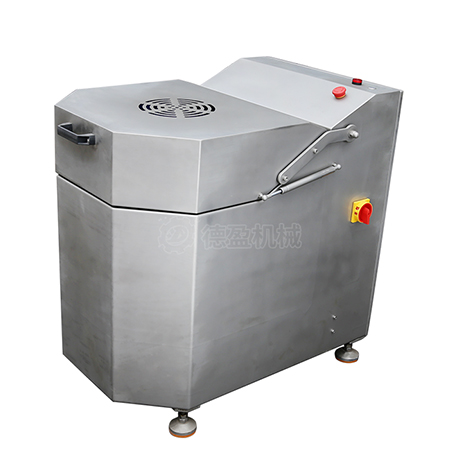
Vegetable Dehydration Machine is mainly used to remove moisture from vegetables. It dehydrates vegetables by heating, air drying or other methods to extend their shelf life. Vegetable Dehydration Machine is used in the food processing industry, especially for the processing of vegetables before storage, transportation or use as finished products. While retaining the original nutrients, color, taste and shape of vegetables, it effectively reduces moisture and reduces the possibility of mildew and rot.
Efficient dehydration
The Vegetable Dehydration Machine can quickly and effectively remove moisture from vegetables through high temperature, strong wind and other drying technologies, significantly improving production efficiency. Its internal design is reasonable, with uniform hot air distribution and multi-layer tray structure to ensure that moisture is evenly removed from all parts of the vegetables and avoid uneven local drying. The equipment is equipped with a precise temperature and humidity control system, which can automatically adjust the drying parameters according to the characteristics of different vegetables, while maintaining efficient dehydration and retaining the nutrients of the vegetables to the maximum extent. In addition, the Vegetable Dehydration Machine focuses on energy consumption optimization, adopts heat circulation and reasonable distribution to reduce energy waste, and some industrial-grade equipment also supports continuous operation, which is suitable for mass production.
Multiple heating methods
Vegetable Dehydration Machine has multiple heating methods, which can select the best drying method according to the needs of different vegetables, improve processing efficiency and product quality. Common heating methods include hot air drying, microwave drying, infrared drying, vacuum drying and freeze drying technology. Hot air drying is suitable for most vegetables, with the characteristics of uniformity and low energy consumption; microwave drying is fast and suitable for high value-added or perishable vegetables; infrared drying can quickly heat the surface of vegetables and reduce energy loss; vacuum drying evaporates water at low temperature and is suitable for temperature-sensitive vegetables; freeze drying technology retains the shape, color and nutrition of vegetables through sublimation drying, and is suitable for high-end dried vegetable products. The diversity of these heating methods enables the equipment to flexibly respond to different processing needs and ensure efficient and high-quality dehydration effects.
Excellent nutrient retention
The Vegetable Dehydration Machine performs well in nutrient retention. Low-temperature dehydration technology can reduce the loss of vitamins and minerals, and rapid dehydration reduces the risk of oxidation. In addition, the uniformly heated hot air circulation system ensures that the vegetables are heated evenly, thereby maintaining color and nutrition, and the additive-free operation further retains the natural nutrients and flavor.
Vegetable Dehydration Machine is mainly used in food processing, catering, home cooking, health food market, hiking and camping, and export trade. In the food industry, dehydrated vegetables are used in canned and ready-to-eat products, and catering service companies use their convenience to reduce food waste. Families are increasingly choosing dehydrators for easy storage and cooking, while the health food market has a strong demand for additive-free dehydrated vegetables. In addition, portable dehydrated vegetables are very suitable for outdoor activities, and their demand continues to grow in the international market. These areas highlight the importance of dehydration technology in the modern food industry.
FAQ
What should I pay attention to during the dehydration process?
Ensure even cutting and consistent thickness to ensure uniform dehydration.
How to store dried vegetables after dehydration?
Store in a sealed container in a cool, dry place to prevent moisture and oxidation.
What is the best way to clean the machine?
Use warm water and mild detergent to wash removable parts, and avoid using metal brushes.
How to avoid odors during dehydration?
Clean the machine regularly to ensure fresh ingredients and avoid cross contamination.
How long can the vegetables be stored after dehydration?
Properly stored dried vegetables can generally be kept for 6 months to a year.
What should I do if the machine makes noise when running?
Check the installation and parts of the equipment for looseness and repair them if necessary.
How to tell if the vegetables are dehydrated?
The vegetables should break easily without any moisture residue, and remain dry and crisp.
How often should they be maintained?
Perform a simple cleaning after each use, and check and maintain mechanical parts regularly.
| Technical Parameters | |
| Overall dimensions | 900×550×970mm |
| Voltage | 380V |
| Power | 1.5KW |
| Output | 500kg/h |